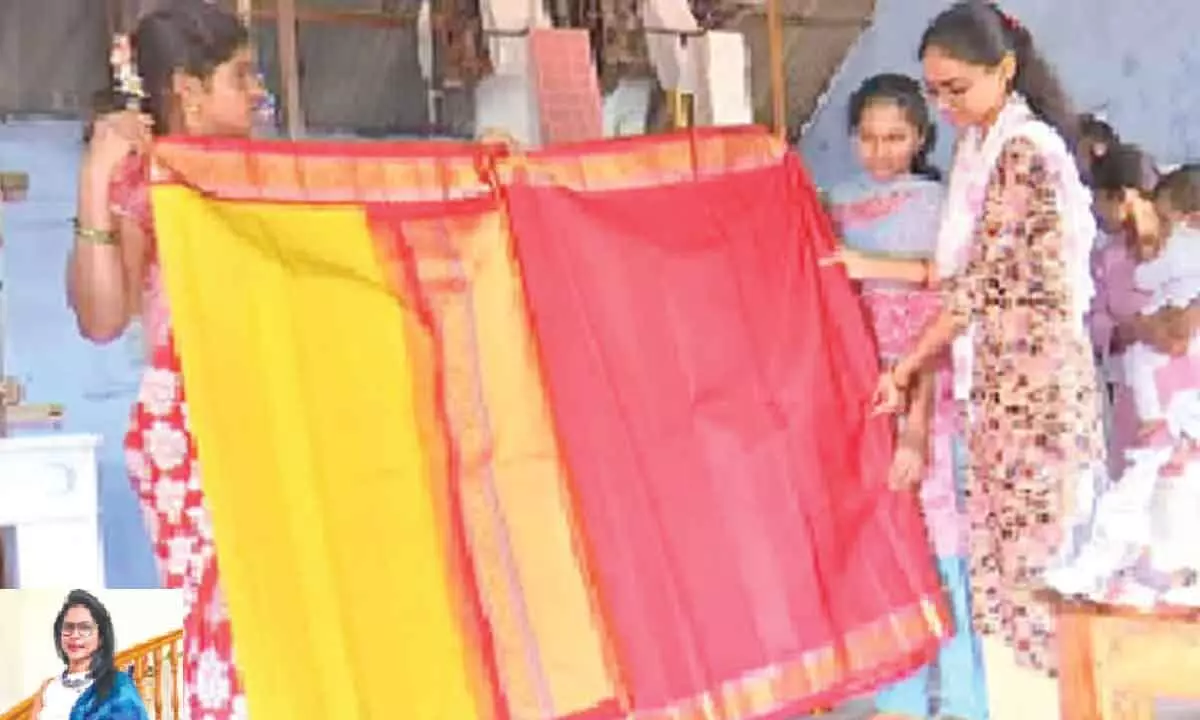The story of Armoor sarees – forgotten glory, to its revival

Nestled among nine mountains – Navanthapuram, now called Armoor – is known for its exquisite saree designs. One of the fastest-growing towns in Telangana, the sarees of Armoor have managed to keep their appeal alive in them, across years and generations
Nestled among nine mountains – Navanthapuram, now called Armoor – is known for its exquisite saree designs. One of the fastest-growing towns in Telangana, the sarees of Armoor have managed to keep their appeal alive in them, across years and generations.
Popular for their richness, heaviness and quality, Armoor sarees have been popular since olden times. Especially known for their extra-weft techniques, zari border and pallu, these sarees possess an unmistakably unique shine. Akin to most southern weaves, even Armoor sarees are woven using the interlocking technique (known as 'kuttu' in Telugu) in order to bring contrasting colours to its borders. This silk range in Armoor is also considered to party be a reinterpretation of the cotton sarees of Narayanpet. Thanks to the initiative of Rani Kumudini Devi of Wanaparthy, since 1930, a novel range of silk evolved in Kothakota with motifs that resembled the ones from Varanasi. In the case of Armoor, one could trace it back to a variety of motifs such as bird's-eye, pitambaralu and vine-and-leaf patterned border range. Armoor sarees are woven by a large settlement of warriors originally from Rajasthan, called the Khatris. Their dialect is a potpourri of Gujarati, Rajasthani and Marathi, with a dash of Telugu.
Depending on the complexity of the design, the making of an Armoor saree requires the labour of 2 weavers and a time range of 3-7 days for fruition. While it is disheartening to see this once-a-buzzing cluster fading from people's memory, the Telangana government's involvement and commitment to reviving this art form's former glory is heart-warming. The research and development cell of the Telangana state government has identified and revived a few of the long-forgotten weaves, that were heavily popular during Nizam's time – such as Siddipet, Telia Rumal, Himroo, and of course, Armoor too. Today, both Himroo and Armoor sarees are being produced in a town called Armoor in the Nizamabad district.
The weavers, especially the women, feel extremely encouraged by the government's efforts in setting up the required infrastructure and creating a conducive environment for the cluster to thrive. A special training centre is now set up in Armoor for the passionate bunch to contribute and also make a sustainable living out of this. The machinery is sourced from Tamil Nadu, and the expert weavers (employed as trainers) are brought from Telangana and other states, for them to train the locals (who are enthusiastic and beyond to be a part of this movement).
The weavers of today, are not only dedicated to this art form from the space of a 'need' but that of a 'want', which restores the faith in the revival and sustenance of the true pride of Telangana – Armoor sarees. You will no longer find Armoor sarees only at TSCO, but in stores across the nation.
If you have never come across this weave, but would love to add another piece of rich, shining and glorious piece of beauty to your wardrobe – look no further than Armoor. For they hold the promise of grace, elegance and sophistication. And just imagine you draping one such beauty – is the world ready to witness it? Absolutely yes.
(The writer is a handloom and handicraft enthusiast. She is also a member of the crafts council. Instagram handle: Rajeswariramachander)

















